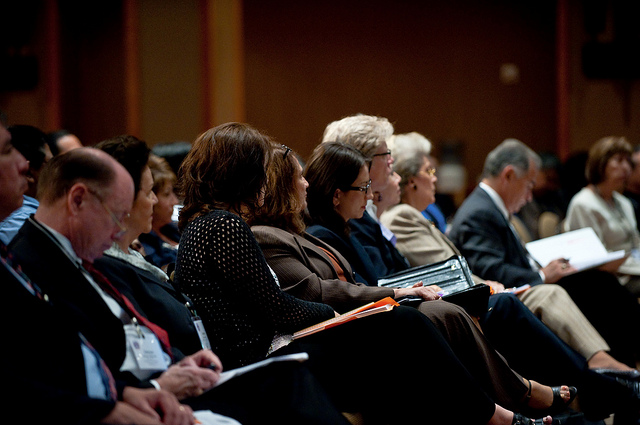2015 Class of Latino State Legislators to Make History

Latinos will serve in state legislatures of 38 states following Election 2014, with
notable gains for Latino Republican state legislators nationwide
Washington, D.C. – According to Election 2014 analysis from the National Association of Latino Elected and Appointed Officials (NALEO) Educational Fund, Latino state legislative candidates made history on Election Night, securing victories in several notable contests nationwide. A table of Latino representation gains state-by-state in State Senates (table 1) and state lower houses (table 2) is available here.
“We are proud to see Latino state legislative candidates make history in Election 2014,” stated Arturo Vargas, executive director of NALEO Educational Fund. “As leaders on the front lines of their communities, Latino state legislators play a crucial role in our democracy by addressing the pressing issues that affect the day-to-day lives of millions of Americans.”
Latinos will serve in the state legislatures of 38 states, up from 37 after the 2012 elections. Set to comprise the largest class of Latino state legislators in history, the 2015 class will include 74 Latino State Senators (a gain of one) and at least 227 Latinos** serving in state lower houses (a gain of four). The increase in the number of states where Latinos serve in state legislatures is a result of gains in Kentucky and Alaska offsetting a loss in Maine.
The 2015 class of Latinos serving in State Senates will include 65 Democrats and 9 Republicans, with the gain of one coming from an additional Democratic seat. Shifts in geographic representation include Latino gains in Arizona, Colorado, Hawaii and Kentucky, with losses in California and Missouri. A state-by-state breakdown is available on table 1 here. Notable Latino victories at the State Senate level include:
- First Latino State Legislator Elected in Kentucky: In Senate District 28, physician Ralph Alvarado (R) emerged victorious in his bid to unseat Senate Minority Floor Leader R.J. Palmer II (D).*
At the state lower houses level, there will be at least 173 Latino Democrats** and 54 Republicans serving following Election 2014. The Latino gains at the state lower houses are due to the success of Latino Republican candidates, with Latino Democrats losing six seats and Latino Republicans gaining 10 seats on Election Night. A state-by-state breakdown is available on table 2 here. Notable changes or contests at the state lower houses include the following:
- First Latina State Legislator Elected in Alaska: Attorney Liz Vazquez (R) won her competitive contest against Marty McGee (D) in House District 22 to become the first Latina to serve in the Alaska House of Representatives.*
- First Latina Republican State Legislator Elected in Nevada: Realtor and community leader Victoria de la Guerra Seaman (R) won her Assembly District 34 race to become the first Latina Republican to serve in the Nevada State Assembly.*
- Number of Latinos Serving in State Lower Houses Could Increase: **As of this writing, the contest between Colorado State Representative Joseph Salazar (D) and Carol Beckler (R) has not been decided. Some ballots are still being counted. If he is victorious, the number of Latino Democrats would increase to 174, resulting in a total of 228 Latinos in state lower houses.
Latinos also made history at the congressional level. The 114th Congress will feature 29 Latinos in the U.S. House of Representatives and three Latinos in the U.S. Senate. A full roster of Latinos serving in the 114th Congress (page 2) and a state-by-state breakdown of Latino congressional gains (page 1) is available on the NALEO Educational Fund website here.
In addition, 12 Latinos (with the possibility of 13) will serve in statewide executive office following Election 2014, an increase of at least two. A full roster (page 3) of the Latinos that will be serving in statewide office in 2014 is available here.
According to research on Latino representation conducted prior to Election Day for the 2014 NALEO Directory of Latino Elected Officials, there are nearly 6,100 Latinos serving in elected office across the country. This is up from the 4,853 Latino elected officials who held office in 2004, demonstrating the progress Latinos continue to make in finding success as candidates. Additional information on representation by level of office and state-by state can be found here.
NALEO Educational Fund projected at least 7.8 million Latinos would cast ballots in Election 2014, an increase of 1.2 million from the 2010 midterm elections. In 2010, more than 6.6 million Latino voters cast ballots, with the Latino electorate playing a decisive role in delivering victories in key state races.
*This analysis is based on historical data from the NALEO Directory of Latino Elected Officials, which includes records on Latino office holders dating back to 1984.
###
About NALEO Educational Fund
NALEO Educational Fund is the nation’s leading non-profit organization that facilitates the full participation of Latinos in the American political process, from citizenship to public service.


